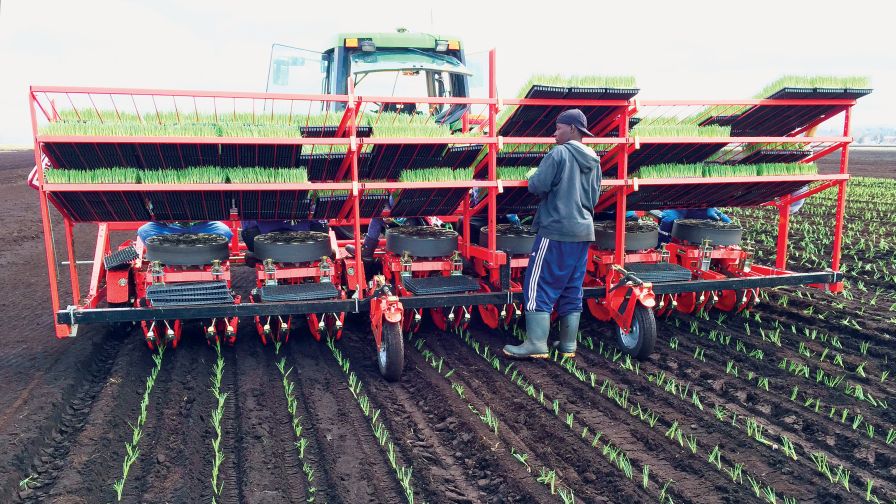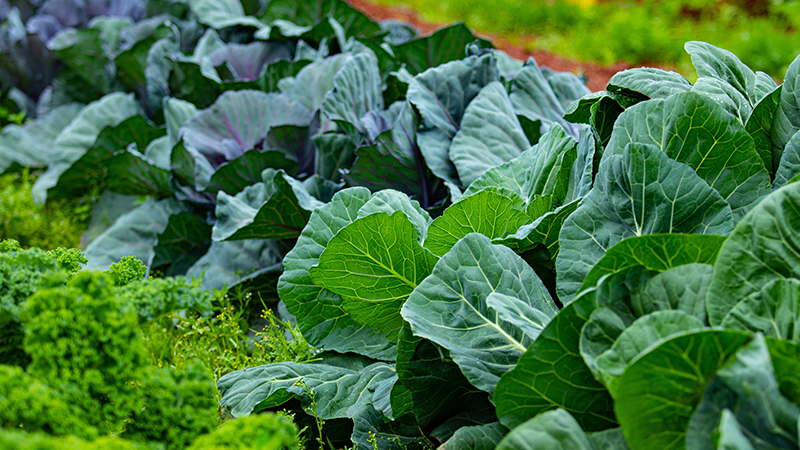9 Ways To Get More Out of Your Farm Equipment

One way to save on labor is to have a transplanter that allows one person to plant two rows at a time.
Photo courtesy of Grant Allen and Checchi & Magli (C&M)
We asked suppliers which questions they hear most often from vegetable growers and which mistakes they see most often.
Here’s the advice they give.
Find Ways to Combine Your Equipment’s Tasks
Most growers are trying to figure out ways how to cut down on A. labor and B. pass thru the field. So they want to know how to mount drip tape and/or plastic layers onto our machines. Some even ask about fertilizer hoppers and planters being mounted. We are one of those manufactures that will try to figure out how to do things and aren’t afraid
to try and help. Some will just give you what they build
and that is it.
– Joel Seal, General Manager, B.W. Implement Co.
Avoid One Size Fits All
The question we are always trying to answer is what planter or transplanter will fit the grower best and if it will work for their specific application. All growers have different cultural practices. Bed width and height, soil type, row spacing, crops, available labor, etc. All those factors play a role in how a piece of equipment is set up and customized. Every grower wants their equipment set up differently, and there is no one-size-fits-all planter or transplanter.
– Joseph Sutton, Operations Manager, Sutton Ag
Ensure Crop Protection Reaches Pests
Vegetable growers constantly ask us how to solve a particular pest or disease issue they are having with their crops, whether it is an insect or fungus problem. The answer is always by getting better coverage. The best way to achieve better coverage is to eliminate the waste created by off target spraying, spray drift, and excess spray runoff from not penetrating the plant canopy. Using a boom allows vegetable growers to target the spray directly at their crop with air so the spray particles can penetrate the plant canopy eliminating all of the waste created by traditional high-pressure spraying. Getting the product where it is needed at the correct rates is the best way to combat pest and disease issues in vegetables.
– Tim Schaal, CEO, Airtec Sprayers
Prepare for Technological Change
What is needed to adopt new technology and automation into my existing farming operation? You must be willing to accept that your current farming practices will have to change slightly to capture the true benefits of new technology. Most new ag technology is not 100% adaptable to what you are doing currently, and an open mind to change makes the transition easier.
– Brian Antle, President, Plant Tape
Reduce Passes in the Field
The past couple of years, the question I hear most often is regarding labor issues, since labor is getting more expensive and harder to find. They want to be able to cut labor.
I tell them a key advantage of our transplanters is that, when properly set, they do not need people following our machines. Our transplanters will set the plant straight up and pack it firmly, and with water. This is imperative both for saving labor and for the seedling/plug/plant to survive. Our goal is to help each grower set their machine so that they will not need anyone following. Labor is indeed huge, and we want to help
reduce labor.
– Grant Allen, C&M North America
Slow Down
There is a direct correlation between planting speed and planting accuracy. Smaller farms will make do with the equipment they have and push them to the limits or outside the range of what the planter is designed to do. Large growers commonly try to plant more in a day, which can come at the expense of planting accuracy.
– Joseph Sutton
Don’t Neglect Prepping Beds
We find many growers are not paying enough attention to what they are plant-ing into. You can’t just throw seed into a hole and hope it works out. Seed bed prep is really important, along with uniformity in height and width of the seed bed — setting all the equipment that comes after planting or before harvest at one constant depth.
– Joel Seal
Bigger Is Not Always Better
The most common mistake I see is thinking bigger is better. You have to look beyond the size of the transplanter and look to the speeds at which automation can provide and the efficiencies that can be gained. A single bed PlantTape transplanting machine operating at 5 to 7 mph provides more acres transplanted than multiple standard transplanting machines with a fraction of the labor.
– Brian Antle
Read the Instructions
Probably the most common is that they do not read our user/operator instructions. Our machines are fully adjustable and, when properly set, they can make their life so much easier. We have been on many farms nationwide where it took just a few adjustments and they no longer needed anyone following our machine. Take a minute before using a transplanter and become familiar with the adjustments.
– Grant Allen










